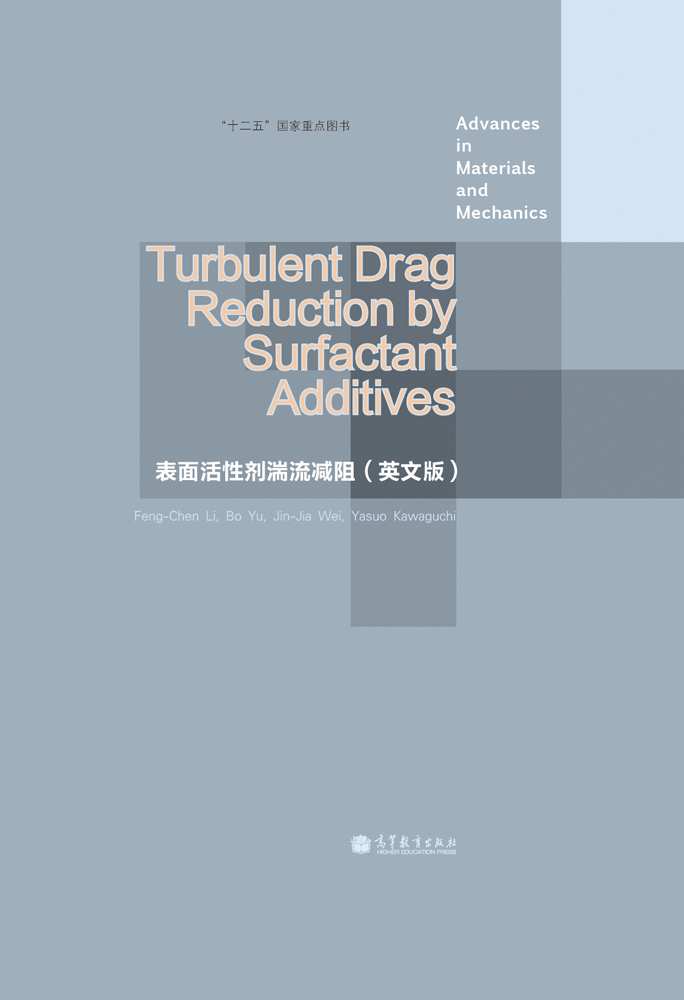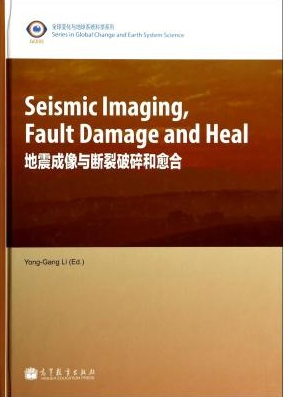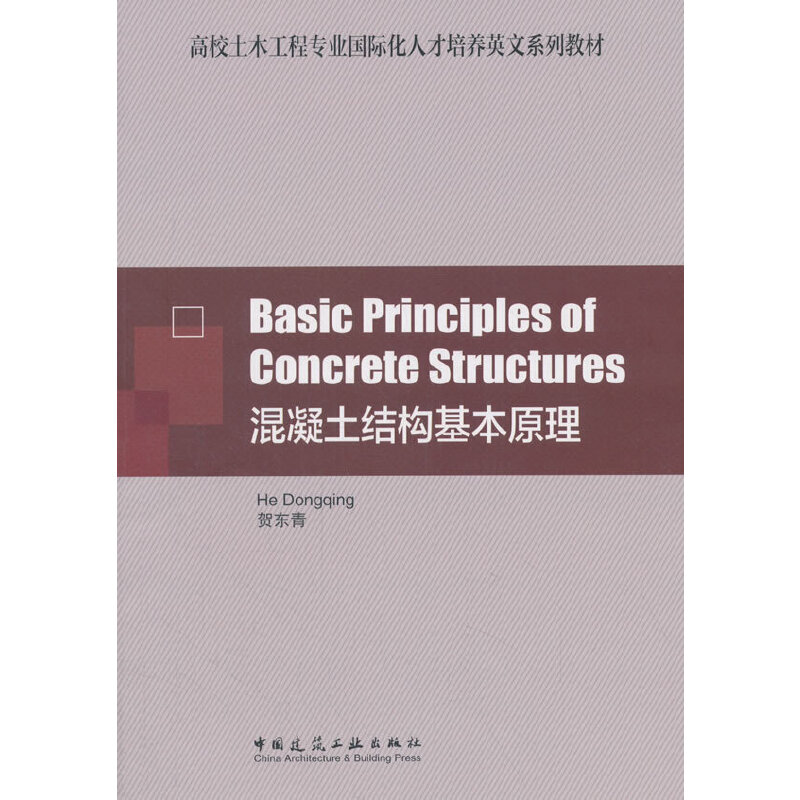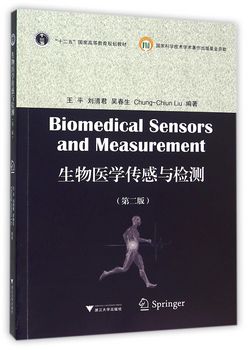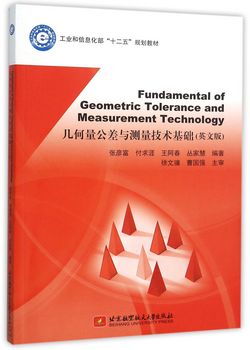表面活性剂湍流减阻(英文版)
作者: Feng-Chen Li,Bo Yu,Jin-Jia Wei等
出版时间:2012-06
出版社:高等教育出版社
- 高等教育出版社
- 9787040348156
- 1版
- 227343
- 48266990-0
- 精装
- 16开
- 2012-06
- 430
- 268
- 工学
- 力学类
- TQ423
- 力学
- 研究生及以上
表面活性剂湍流减阻是流体动力学领域多年来的研究热点,这一现象同时与湍流、流变学、流体动力学等多个方面密切相关,而且对其进行应用推广需要化工、机 械、市政等不同领域知识的有机结合。《表面活性剂湍流减阻(英文版)》正是在这一背景下,基于表面活性剂湍流减阻流动研究领域最新的实验、数值模拟和理论 分析方面的研究成果,详细阐述有关表面活性剂湍流减阻流动的湍流特性、流变学物性、理论、特殊技术以及实际应用方面的问题。
《表面活性剂湍流减阻(英文版)》可供流体力学、工程热物理、化学工程、空调、制冷等相关专业研究生以及相关研究领域的科研人员参考使用。
Front Matter
1 Introduction
1.1 Background
1.2 Surfactant Solution
1.2.1 Anionic Surfactant
1.2.2 Cationic Surfactant
1.2.3 Nonionic Surfactant
1.2.4 Amphoteric Surfactant
1.2.5 Zwitterionic Surfactant
1.3 Mechanism and Theory of Drag Reduction by Surfactant Additives
1.3.1 Explanations of the Turbulent DR Mechanism from the Viewpoint of Microstructures
1.3.2 Explanations of the Turbulent DR Mechanism from the Viewpoint of the Physics of Turbulence
1.4 Application Techniques of Drag Reduction by Surfactant Additives
1.4.1 Heat Transfer Reduction of Surfactant Drag-reducing Flow
1.4.2 Diameter Effect of Surfactant Drag-reducing Flow
1.4.3 Toxic Effect of Cationic Surfactant Solution
1.4.4 Chemical Stability of Surfactant Solution
1.4.5 Corrosion of Surfactant Solution
References
2 Drag Reduction and Heat Transfer Reduction Characteristics of Drag-Reducing Surfactant Solution Flow
2.1 Fundamental Concepts of Turbulent Drag Reduction
2.2 Characteristics of Drag Reduction by Surfactant Additives and Its Influencing Factors
2.2.1 Characteristics of Drag Reduction by Surfactant Additives
2.2.2 Influencing Factors of Drag Reduction by Surfactant Additives
2.3 The Diameter Effect of Surfactant Drag-reducing Flow and Scale-up Methods
2.3.1 The Diameter Effect and Its Influence
2.3.2 Scale-up Methods
2.3.3 Evaluation of Different Scale-up Methods
2.4 Heat Transfer Characteristics of Drag-reducing Surfactant Solution Flow and Its Enhancement Methods
2.4.1 Convective Heat Transfer Characteristics of Drag-reducing Surfactant Solution Flow
2.4.2 Heat Transfer Enhancement Methods for Drag-reducing Surfactant Solution Flows
References
3 Turbulence Structures in Drag-Reducing Surfactant Solution Flow
3.1 Measurement Techniques for Turbulence Structures in Drag-Reducing Flow
3.1.1 Laser Doppler Velocimetry
3.1.2 PIV
3.2 Statistical Characteristics of Velocity and Temperature Fields in Drag-reducing Flow
3.2.1 Distribution of Averaged Quantities
3.2.2 Distribution of Fluctuation Intensities
3.2.3 Correlation Analyses of Fluctuating Quantities
3.2.4 Spectrum Analyses of Fluctuating Quantities
3.3 Characteristics of TurbulentVortex Structures in Drag-reducing Flow
3.3.1 Identification Method of Turbulent Vortex by Swirling Strength
3.3.2 Distribution Characteristics of Turbulent Vortex in the x-y Plane
3.3.3 Distribution Characteristics of Turbulent Vortex in the y-z Plane
3.3.4 Distribution Characteristics of Turbulent Vortex in the x-z Plane
3.4 Reynolds Shear Stress and Wall-Normal Turbulent Heat Flux
References
4 Numerical Simulation of Surfactant Drag Reduction
4.1 Direct Numerical Simulation of Drag-reducing Flow
4.1.1 A Mathematical Model of Drag-reducing Flow
4.1.2 The DNS Method of Drag-reducing Flow
4.2 RANS of Drag-reducing Flow
4.3 Governing Equation and DNS Method of Drag-reducing Flow
4.3.1 Governing Equation
4.3.2 Numerical Method
4.4 DNS Results and Discussion for Drag-reducing Flow and Heat Transfer
4.4.1 The Overall Study on Surfactant Drag Reduction and Heat Transfer by DNS
4.4.2 The Rheological Parameter Effect of DNS on Surfactant Drag Reduction
4.4.3 DNS with the Bilayer Model of Flows with Newtonian and Non-Newtonian Fluid Coexistence
4.5 Conclusion and Future Work
References
5 Microstructures and Rheological Properties of Surfactant Solution
5.1 Microstructures in Surfactant Solution and Its Visualization Methods
5.1.1 Microstructures in Surfactant Solution
5.1.2 Visualization Methods for Microstructures in Surfactant Solution
5.2 Rheology and Measurement Methods of Surfactant Solution
5.2.1 Rheological Parameters
5.2.2 Measurement Method of Rheological Parameters
5.2.3 Rheological Characteristics of Dilute Drag-reducing Surfactant Solution
5.3 Factors Affecting the Rheological Characteristics of Surfactant Solution
5.3.1 Surfactant Concentration
5.3.2 Temperature
5.3.3 Type of Surfactant
5.4 Characterization of Viscoelasticity of Drag-reducing Surfactant
Solution by Using Free Surface Swirling Flow
5.5 Molecular and Brownian Dynamics Simulations of Surfactant Solution
5.5.1 Brief Introduction of Simulation Methods
5.5.2 Brownian Dynamics Simulation by Using a WK Potential
References
6 Application Techniques for Drag Reduction by Surfactant Additives
6.1 Problems That Need to Be Solved in Engineering Applications
6.1.1 Influencing Factors of Drag-reducing Surfactant Additives on the Heat Transfer Performance of Heat Exchangers and Its Counter-measures
6.1.2 Influences of Drag-reducing Surfactant Additives on the Environment
6.1.3 Scale-up Problem
6.2 Separation Techniques for Surfactant Solution
6.2.1 Adsorption
6.2.2 Ultrafiltration
6.2.3 Reverse Osmosis
6.3 Drag Reduction Stability of Surfactant Solutions
6.3.1 Effect of Adsorption
6.3.2 Effects of Fe(OH)3
6.3.3 Effects of Cu(OH)2
6.3.4 Recovery of Drag Reduction
6.4 Applications of Surfactant Drag Reduction
6.4.1 Application of Surfactant to Hydronic Heating and Air-Conditioning Systems
6.4.2 Surfactant Selection in Actual Applications
References
Index
版权

